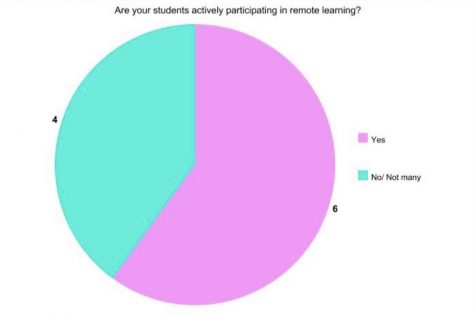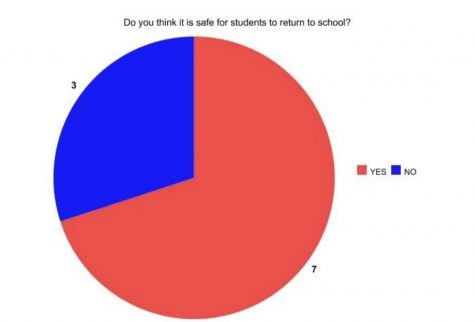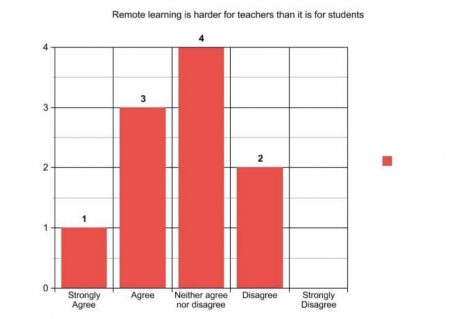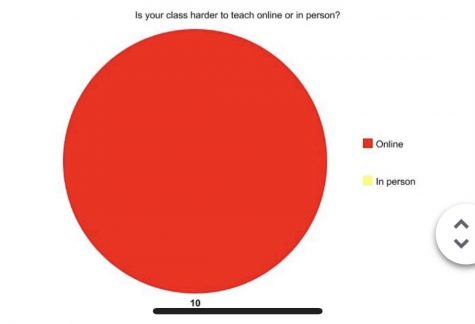Virtual Learning: Staff Edition
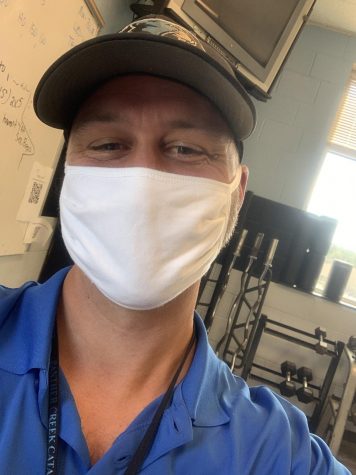
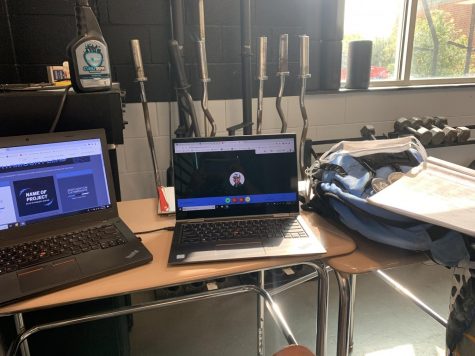
We have heard countless amounts of stories from students all across the country on how virtual learning has affected them. We are aware of students’ response to virtual learning but we don’t hear much regarding teachers and administration. I had the opportunity to virtually interview Bryan Cromer and his answers were shocking.
Cromer is the head varsity softball coach and weight training teacher at Panther Creek. His students range from between sophomores all the way to seniors. Being exposed to so many different students with a variety of different ages plays a big role in his virtual learning experience.
Like many other teachers, computer screen interaction has changed ways of learning. “Virtual learning has turned my teaching practices upside down” states Cromer. “I am one who truly thrives on in person interaction. Being able to carry on conversations with students face to face while working in the classroom environment is what I prefer.”
I asked Cromer what the hardest part of virtual learning was for him. His answer was heartbreaking. “The toughest part for me is the camera requirement. Wake County does not allow teachers to require cameras to be turned on during class. I have openly hinted at the fact that I love seeing students’ faces and appreciate cameras being turned on but only one or two students flatter me by leaving their cameras on.”
“It is very difficult to go from in person instruction to sometimes begging for participation, even if it is just in the chat, and staring at letters or small pictures for the duration of a 30 minute synchronous session” he further stated.
Being comfortable in front of a camera with roughly thirty high school students watching you takes guts. For many teachers, let alone people, it is very difficult to keep students engaged over a screen. “I have enjoyed challenging myself to have the same or a bigger impact on students with the obstacle of having to remain virtual for an entire semester” states Cromer. Despite the circumstances it is crucial to establish relationships within virtual learning environments. “I try harder to connect with my students than I feel I ever have before.”
Part of being a high school teacher is having interaction with young people. Interaction is key for the virtual learning environment but it comes in different waves for Cromer. He further states that up to half of his students are actively engaged in virtual instruction. “I would say between 25-50% of my students actively participate with another 25% participating if I specifically call on them. The remaining 25% either completes assignments online without attending the live session, opts out of participating, or does not complete the work altogether.”
For the most part, many teachers would say half of a class being engaged is unimaginable. Many other teachers have stated how keeping their classes engaged in learning is one of the biggest challenges of our virtual learning environment now.
Cromer further states how often cameras are off for his classes. “Cameras are almost always off. I typically have to wait a bit of time for responses, but they usually come. For the most part my students have been amazing.”
It has been frequently said that the quarantining days of COVID-19 have allowed many people to sit back and appreciate their lives for every piece they have had. “With the changes of the 2020-2021 school year I have adapted to new learning environments. These sudden changes have allowed me to truly focus on what really matters.”
Virtual learning has had a huge toll on every teacher across the nation. Whether they are open or not on camera, students do not understand the impacts COVID-19 has had on staff members and administration nationwide.
Imagining thirty black screens must be terribly disheartening for any teacher. Next time you are in a virtual classroom setting, ponder the thought of how thrilled your teacher will be to see a friendly face or any sort of interaction from you.


